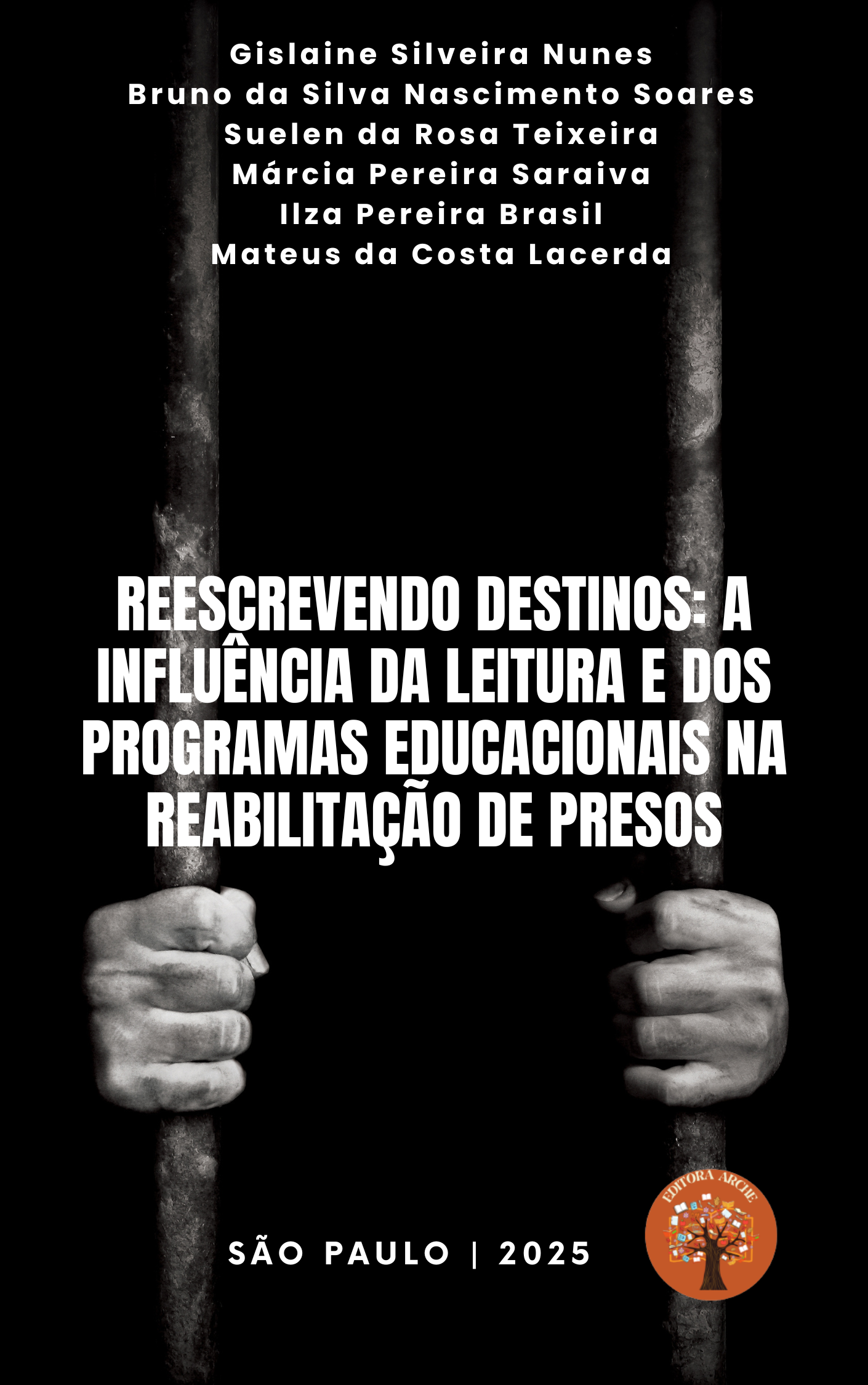REWRITING DESTINIES: THE INFLUENCE OF READING AND EDUCATIONAL PROGRAMS ON THE REHABILITATION OF PRISONERS
Keywords:
Social Reintegration. Prison Education. Transformative Reading. Rehabilitation of Inmates. Public Policies.Abstract
Reading and education have been, for centuries, catalysts for social and individual transformation. In prison environments, where the deprivation of liberty often results in cycles of recidivism, access to knowledge can become a passport for reintegration and redefinition of life paths. The digital book Rewriting Destinies thoroughly investigates how education and reading incentive programs contribute to the rehabilitation of incarcerated individuals, exploring both the barriers and the advancements in this challenging scenario.
This study begins with an investigation into the role of education and reading in prisons. Here, the theoretical and historical bases of the relationship between teaching and social reintegration are presented, analyzing how the absence of educational opportunities in the prison system contributes to the continuous marginalization of inmates. The chapter addresses how access to learning stimulates not only personal growth, but also professional development, increasing the chances of a successful adaptation to society after liberation. In addition, it brings a comparative view between different countries, highlighting successful practices and identifying gaps that still need to be filled so that education becomes an accessible and effective right in prison units.
In the following chapter, entitled Unlocking Freedom: The Transformative Power of Reading Behind Bars, the approach delves into the subjective relationship between the act of reading and the reconstruction of the identity of inmates. More than a means of entertainment, literature works as a powerful tool for resignification, allowing imprisoned individuals to develop new perspectives on themselves and the world around them. Based on testimonies and academic research, the text explores the emotional and psychological impacts of reading, emphasizing its ability to arouse empathy, expand the cultural repertoire, and foster critical reflection. Initiatives that offer access to prison libraries and reading clubs in penitentiaries are also analyzed, evidencing their positive effects in reducing violence and improving coexistence among inmates.
The work continues with an analysis of the impact of work and educational programs on the rehabilitation outcomes of incarcerated individuals. In this excerpt, the relevance of professional training and formal education as mechanisms of transformation and resocialization is investigated. The professionalization of inmates is presented as a fundamental element for social and economic reintegration, reducing criminal recidivism and strengthening the self-esteem of individuals. Different models of teaching and working in prison units are discussed, with a detailed look at their advantages, limitations and structural challenges. The chapter also compares the approaches adopted in different countries and states, identifying which strategies demonstrate the best long-term results.
Continuing, the book explores the impact of reading programs on the rehabilitation of prisoners, with a special focus on the remission of sentence through literature. This chapter discusses the regulations and public policies that allow the reduction of the sentence of inmates who carry out supervised readings and produce reviews or reports on the works read. The text details the process of implementing this type of program, addressing both the bureaucratic challenges and the concrete benefits for the inmates. Data are presented that demonstrate how these initiatives contribute to the cognitive and emotional development of prisoners, encouraging them to seek new educational horizons. In addition, the chapter emphasizes the importance of diversified literary curatorships adapted to the profile of the prison public, in order to ensure that reading is in fact an instrument of personal and social growth.
Finally, the work brings a detailed case study on the State Center for Youth and Adult Education and Popular Culture – NEEJACP – Julieta Villamil Balestro, a project that exemplifies in practice the concepts discussed in the previous chapters. The experience of this educational center is analyzed based on testimonies, statistics and institutional evaluations, offering a concrete view of the challenges and achievements achieved through the implementation of educational programs in prison units. The case study illustrates how education, when applied in a structured and continuous way, can effectively contribute to changing the lives of inmates, creating real possibilities for social and labor reintegration after serving their sentence.
In this way, Rewriting Destinies shows how education and reading play an essential role in the reconstruction of trajectories interrupted by incarceration. In addition to addressing the importance of these elements in the rehabilitation of inmates, the book provokes a reflection on the collective responsibility in creating opportunities for social reintegration. Transformation begins with knowledge, and it is through it that previously inaccessible paths can be discovered and trodden.
Happy reading everyone!
The authors,
Gislaine Silveira Nunes
Bruno da Silva Nascimento Soares
Suelen da Rosa Teixeira
Márcia Pereira Saraiva
Ilza Pereira Brazil
Mateus da Costa Lacerda
Downloads

Downloads
Published
How to Cite
License
Atribuição CC BY
